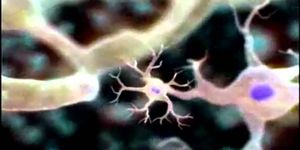
It is possible to detect when we provide false information regarding our health conditions through our handwriting, according to a new study conducted at the University of Haifa. The study used a computerized system, developed by Prof. Sara Rosenblum from the University of Haifa and patented recently, to analyze the handwriting process. "Our findings can provide the health care system and insurance companies with a fairly simple tool with which to discover medical fraud, without the need for intrusive devices such as the polygraph that tries to detect physiological changes," said Dr. Gil Luria, one of the study's conductors.
Medical fraud has become a common phenomenon in recent years. There are many cases of doctors encountering patients who want sick leave or compensation from the various health insurance providers, and who lie about their medical condition. The financial cost to health insurance providers in the United States due to false reporting is estimated at fifty billion dollars a year, not including the cost of wasted work days of doctors and the cost of the various tests performed.
In a previous study conducted several years ago, Dr. Gil Luria and Prof. Sara Rosenblum performed a pilot study of the computerized writing kit in which they found that deceptive and truthful writing in general can be detected. In their present study, performed together with Dr. Allon Kahana, the sample was increased significantly to include 98 participants. More importantly, however, this time the researchers chose to focus on testing the reliability of specific information - medical data - because of the difficulty that the health care system has in checking when patients are lying.
The participants were asked to write two paragraphs on the condition of their health, the first describing their real situation and the second describing fabricated medical symptoms. The participants wrote the two paragraphs on a computerized writing kit developed by Prof. Rosenblum that obtains data regarding the pressure being exerted on the page, the rate and speed of writing, the duration and number of times the pen remains raised in comparison with the duration and number of times it is touching the paper, the size of the letters and more.
This study shows that the system can identify when participants have written the truth and when they have lied. For example, the pressure exerted on the page when the participants were writing false symptoms was greater than when they were writing about their true medical condition. The regularity of the strokes when writing a lie, reflected in the height and width of the letters, was significantly different from the regularity of the strokes when writing the truth. Differences in duration, space and pressure were also found in false writing. The researchers were also able to divide the types of handwriting into more distinct profiles (very small or large handwriting) and to find other more substantial differences associated with each writing profile.
According to the researchers, when a person writes something false, cognitive load is created in the brain, and this load creates competing demands for resources in the brain, such that operations that we usually perform automatically, like writing, are affected. They added that the current study found that false medical information in "laboratory conditions" creates cognitive load that enables the computer system to identify changes in handwriting, and it can be assumed that in a natural situation, together with the need to lie to the doctor, the cognitive load would be even greater.
Even a doctor who is very knowledgeable will find it difficult to detect health fraud when a patient presents false symptoms from his field of expertise, so doctors are themselves trying to develop tools to solve the problem, however with very limited success. The writing kit provides a non-intrusive and simple testing device. Despite technological progress, handwriting is still the most common means used for daily communication, and we see clearly that every person has his own writing style. With a handwriting diagnostic kit, we can analyze whether the person is writing the truth or lies, the researchers concluded.
 It is possible to detect when we provide false information regarding our health conditions through our handwriting, according to a new study conducted at the University of Haifa. The study used a computerized system, developed by Prof. Sara Rosenblum from the University of Haifa and patented recently, to analyze the handwriting process. "Our findings can provide the health care system and insurance companies with a fairly simple tool with which to discover medical fraud, without the need for intrusive devices such as the polygraph that tries to detect physiological changes," said Dr. Gil Luria, one of the study's conductors.
It is possible to detect when we provide false information regarding our health conditions through our handwriting, according to a new study conducted at the University of Haifa. The study used a computerized system, developed by Prof. Sara Rosenblum from the University of Haifa and patented recently, to analyze the handwriting process. "Our findings can provide the health care system and insurance companies with a fairly simple tool with which to discover medical fraud, without the need for intrusive devices such as the polygraph that tries to detect physiological changes," said Dr. Gil Luria, one of the study's conductors.







